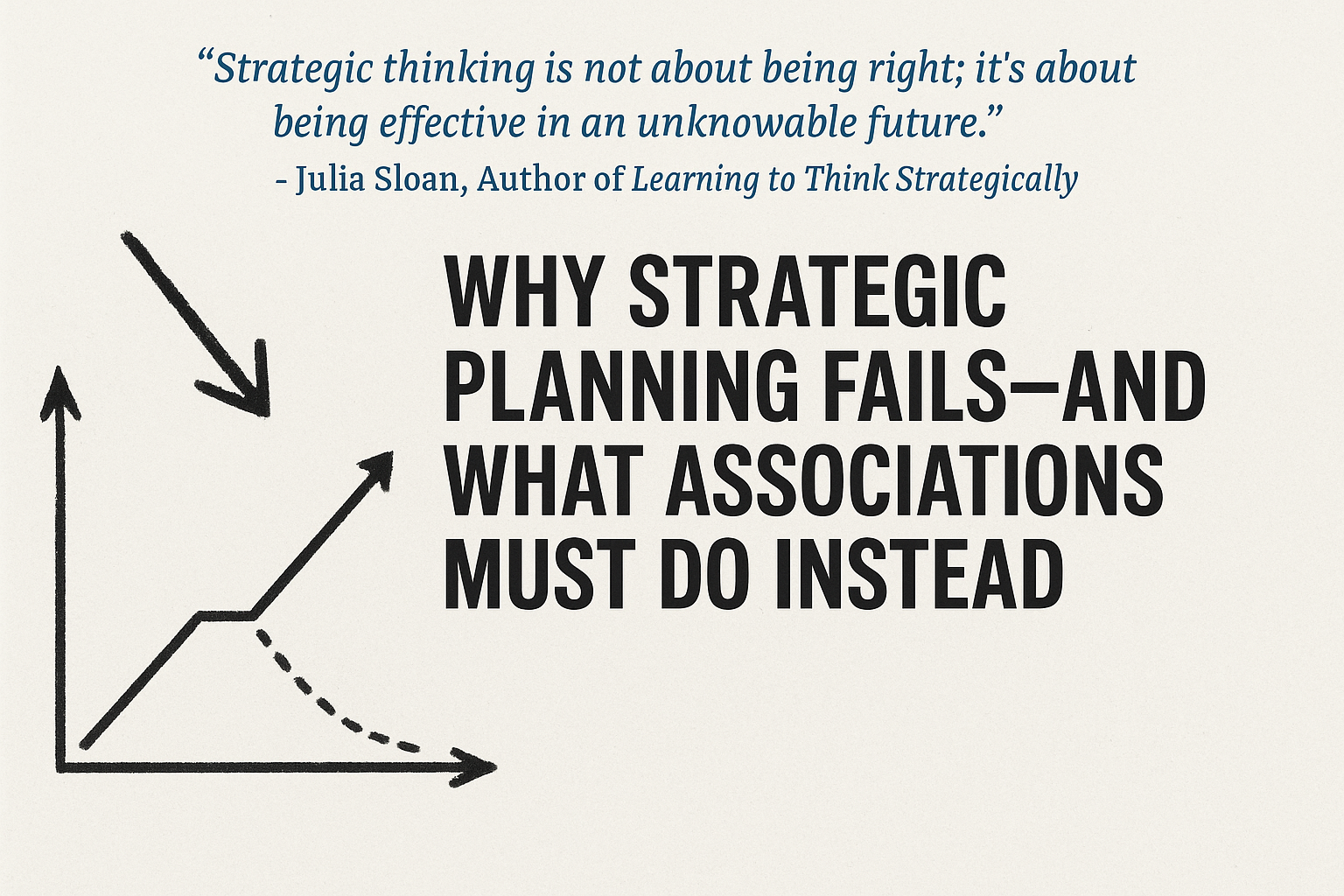
“Strategic thinking is not about being right; it’s about being effective in an unknowable future.”
— Julia Sloan, Author of Learning to Think Strategically
Strategic planning has long been a mainstay of association management. Every few years, boards and staff gather to define goals, outline priorities, and chart a course for the future. Yet, despite the effort, many associations find themselves no more capable, adaptive, or aligned after the plan is written than they were before. Why? Because strategic planning, as it’s often practiced, fails to build strategic capacity—the actual engine of long-term relevance and resilience.
The Core Problems with Traditional Strategic Planning:
- Plans Assume Stability. Reality Doesn’t.
Most plans are created in linear formats—assuming predictability, clarity, and control. But we live in a BANI (Brittle, Anxious, Nonlinear, Incomprehensible) world. A static document quickly loses relevance in a dynamic environment. - Focus on Goals, Not Capabilities.
Planning emphasizes what we want to achieve rather than how we are prepared to navigate the future. This leads to wishful thinking rather than organizational readiness. - Board Buy-In ≠ Organizational Integration.
Even a beautifully facilitated planning retreat won’t matter if staff, volunteers, and members don’t internalize the resulting plan—or if it doesn’t lead to changes in behaviors, systems, or decision-making. - Capacity is Built Daily, Not Every 3 Years.
Planning is episodic. Capacity is continuous. Strategic capacity is developed through reflection, experimentation, and aligned action over time—not during a weekend retreat. - Planning is About Control. Capacity is About Adaptation.
Associations that focus too much on planning often overlook the deeper, more challenging work of developing the ability to adapt, listen, learn, and respond to changing conditions.
What Associations Should Do Instead: Build Strategic Capacity
- Invest in Foresight: Regularly scan your environment, anticipate emerging trends, and scenario-plan beyond the planning cycle.
- Strengthen Adaptive Leadership: Equip your board and staff with the mindset and tools to act decisively in uncertainty.
- Practice Strategic Thinking, Not Just Planning: Encourage curiosity, cross-functional dialogue, and time to reflect—not just execute.
- Integrate Strategy Into Operations: Embed strategic intent into meetings, evaluations, budgeting, and culture—not just the plan document.
- Develop the Seven Strategic Capacities: Focus on governance foresight, operational integrity, curiosity, resource development, program delivery, reputational impact, and technology proficiency.
CODA:
A strategic plan can provide direction. But strategic capacity gives you motion. If your association’s planning efforts aren’t building the capacity to think, adapt, and lead—then it’s time to move beyond planning and start transforming.
Want to learn how to turn your strategic plan into strategic capacity? Let’s talk.